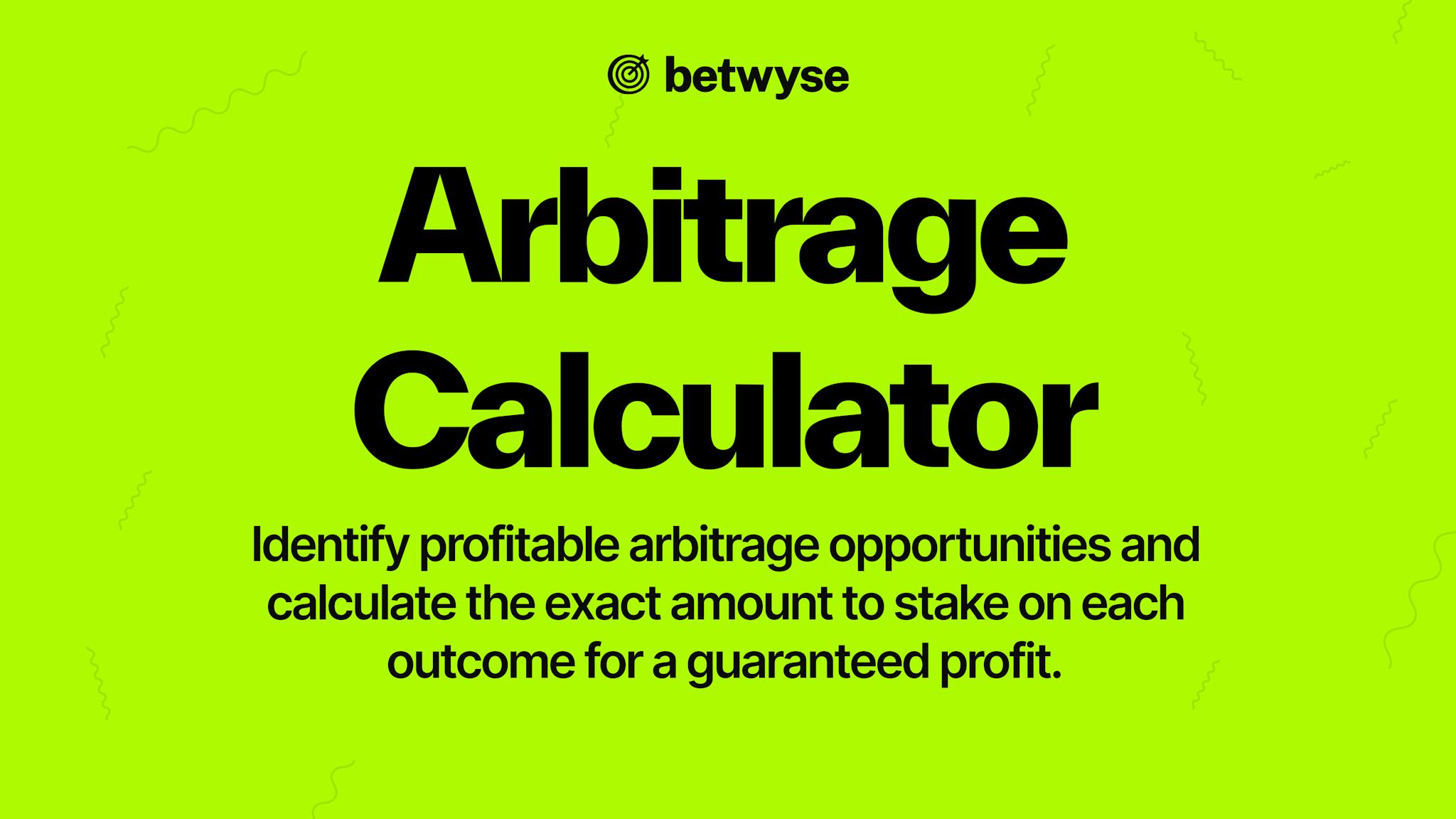Arbitrage Calculator
Identify profitable arbitrage opportunities and calculate the exact amount to stake on each outcome for a guaranteed profit.
Learn more about odds
Understanding betting odds
If you are new to sports betting, understanding betting odds can seem overwhelming. However, once you understand how odds work, you will be able to make more informed decisions when placing bets. Essentially, odds represent the probability of an event occurring and the payout you will receive if you win your bet.
When reading odds, keep in mind that the lower the odds, the more likely the event is to occur. However, lower odds also mean a lower payout. On the other hand, higher odds mean a higher payout, but the event is less likely to occur. By understanding how odds work, you will be able to make more informed decisions when placing bets and increase your chances of success.
There are three main types of betting odds: American, decimal, and fractional. American odds are the most common in the United States, while decimal odds are more popular in Europe and Australia. Fractional odds are commonly used in the UK.
American odds explained
American odds, also known as moneyline odds, are the most common type of odds used in the United States. American odds represent the amount that must be wagered to win $100 or the amount that can be won from a $100 wager. For example, if the odds are -110, you must wager $110 to win $100. If the odds are +150, you will win $150 for every $100 wagered.
American odds can be presented as either a positive or negative number. A negative number represents the favorite and a positive number represents the underdog. To calculate the total payout for a positive number, simply multiply the amount wagered by the odds and add the amount wagered. For example, if you bet $50 on odds of +150, your total payout would be $125 ($50 x 1.5 + $50). To calculate the total payout for a negative number, divide the amount wagered by the odds and add the amount wagered. For example, if you bet $110 on odds of -110, your total payout would be $200 ($110 / 1.1 + $110).
Understanding the different types of betting odds is essential for successful sports betting. Each type of odds has its own advantages and disadvantages, so it is important to choose the type of odds that works best for you.
Fractional odds explained
Fractional odds are the traditional way of presenting odds in the United Kingdom and Ireland. They are also commonly used in horse racing. Fractional odds represent the ratio of the amount won to the amount wagered. For example, if the odds are 2/1, you will receive $2 for every $1 wagered.
Fractional odds are presented as a numerator and denominator. The numerator represents the amount won and the denominator represents the amount wagered. To calculate the total payout, simply multiply the amount wagered by the fraction. For example, if you bet $50 on odds of 2/1, your total payout would
Decimal odds explained
Decimal odds are the most common type of odds used in Europe, Canada, Australia, and New Zealand. They are also becoming increasingly popular in the United States. Decimal odds represent the total payout a bettor will receive on a winning bet for every unit wagered.
For example, if the odds are 2.50, you will receive $2.50 for every $1 wagered. Decimal odds are easy to understand and calculate. To calculate the total payout, simply multiply the odds by the amount wagered. For example, if you bet $50 on odds of 2.50, your total payout would be $125 ($50 x 2.50).
Probability odds explained
Implied probability is a concept that gives you the likelihood or expected frequency of a certain outcome, represented in percentage form. It is derived directly from betting odds and helps you understand the chances that bookmakers give to a particular event happening.
For instance, if a bookmaker offers odds of 2.50 (Decimal) for a team to win, the implied probability is calculated as 1 divided by 2.50, resulting in a 40% chance of that outcome. It is a crucial tool as it not only informs the bettor of the perceived likelihood but also aids in identifying potential value in the odds. In essence, if you believe the likelihood of an event occurring is higher than the implied probability, it might be a good betting opportunity. Conversely, if it is lower, the odds might not be in your favor.
Frequently asked questions
Everything you need to know about odds
If you have anything else you want to ask, reach out to us.
- How do I calculate potential winnings using betting odds?
- Multiply your stake by the odds. For example, with a $10 stake at odds of 2.50, potential winnings are $25 ($10 x 2.50).
- How do positive and negative betting odds differ?
- Positive odds indicate an underdog and show the profit on a $100 bet. For example, +200 means a $100 bet could win $200. Negative odds show the favorite; -150 means you need to bet $150 to win $100.
- How are fractional odds different from decimal odds?
- Fractional odds, like 5/2, mean you would win $5 for every $2 staked. Decimal odds, like 2.50, are multiplied by your stake to determine potential winnings.
- What does 'even odds' signify?
- Even odds, represented as 2.00 in Decimal, 1/1 in Fractional, or +100 in Moneyline, indicate a 50% chance of the event happening.
- How do bookmakers set odds?
- Bookmakers analyze data, player conditions, trends, and other factors. They also adjust odds based on betting volume to ensure a profit.
- Why do odds change before the game starts?
- Odds can shift due to various reasons, like player injuries, betting patterns, and news updates, affecting the perceived probability of outcomes.
- How can I convert odds between formats using the calculator?
- Simply input the odds in your preferred format, and the calculator will instantly provide conversions in Decimal, Fractional, and Moneyline formats.
- What does the implied probability tell me?
- Implied probability derived from betting odds gives you an idea of the bookmaker’s perceived chance of the outcome happening, in percentage terms.
- Why are there different odds formats?
- Odds formats vary based on regional preferences and historical practices. The three main formats are Decimal, Fractional, and Moneyline (American).
you might be interested in
Other tools
Check out our other tools to help you improve your bettings

Bet Calculator
Calculate, predict, and see your potential winnings in real-time with our bet calculator.

Arbitrage Calculator
Identify profitable arbitrage opportunities and calculate the exact amount to stake on each outcome for a guaranteed profit.

Parlay Calculator
Calculate your potential payouts for multi-event bets. Input your odds and stakes to see potential winnings for parlays.